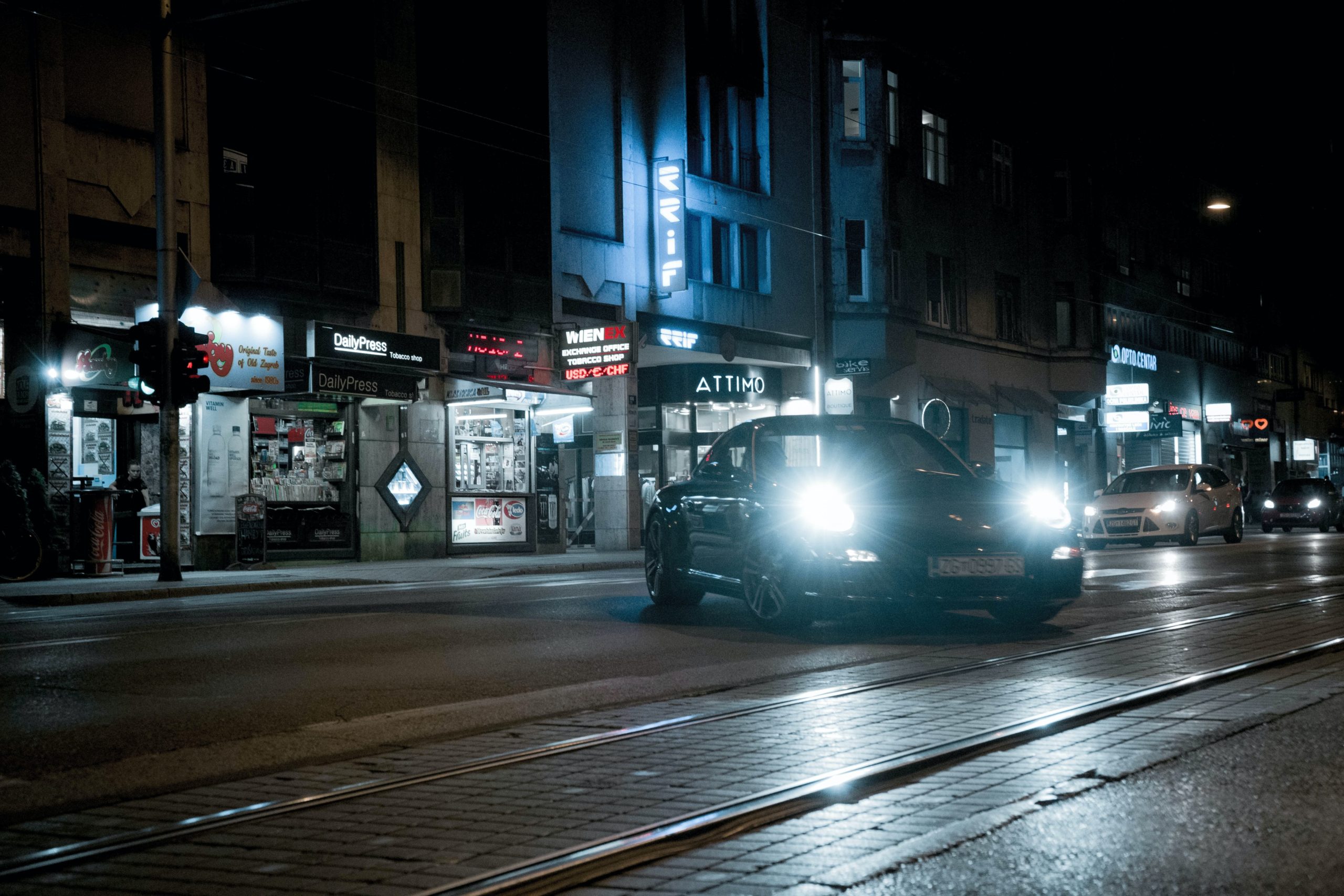What are parking lights? Where are they on your car and do they operate automatically? How do these lights exactly work?
If you’re like many Americans who don’t quite recall hearing about parking lights in their high school drivers’ education class, don’t worry. It wasn’t because you were napping or doodling in your notebook. Parking lights are one of the most misunderstood components on a car. Many drivers would have a hard time identifying them on their own car.
Here at Spacer, we think it’s about time that parking lights got a spotlight of their own. Once you know more about how these helpful little lights work, you’ll be happy you have them!
Let’s pull back the curtain: what are parking lights?
It can be difficult to define parking lights. In fact, it might be easier to start by explaining what parking lights are not. They are not, for instance, fog lights or daytime running lights.
They are not the same as your headlights, although you can find them in the same unit in some cars. While parking lights may at one time have been circuited through the same system as signal lights, they are not necessarily the blinker light or turn signal light.
Moreover, parking lights have nothing to do with brake lights and they are completely separate from the hazard lights that you might actually use when parking.
Parking lights are sometimes confused for parking sensors or the little lights that may engage when your parking assist system is helping you back up. But once again, those aren’t parking lights.
So, what are parking lights?
The consensus is, parking lights are a slightly outdated light system on the front, side, or rear of your car. They were originally intended for parking—as we’ll discuss in a moment—but nowadays, they function mostly to make your car more visible on the road. And that’s where the consensus ends. From there, parking lights can look different depending on the car manufacturer and age of the vehicle.
On the one hand, there’s no universal placement for parking lights. On most cars, you can find them on the outer edge of your headlights, although some will place them on the inner edge, instead. In some older or European cars, you can find them in a completely separate lamp, still on the front of the car. This separate lamp might be located above or below the headlight and either on the grille or bumper.
To make matters even more confusing, parking lights can also include those little comet-shaped or rectangular lights that you might find on the side of your car.
When it comes to rear parking lights, the details are just as jumbled. Some cars have rear parking lights while some do not. They may be above, below, or housed within the brake light unit.
Parking lights’ colors can vary too. You can find amber or white parking lights on the front bumper, and red parking lights in the rear. Some flash with the blinker light while others don’t.
Then, there’s the long list of parking light aliases. Parking lights can also be called parking lamps, side lamps, sidelights, front position lamps, or simply position lamps, depending on where you are.
For instance, they’re more likely to be called sidelights in the UK, and parking lights here in the US.
And finally, you can even find different symbols or icons for parking lights on your car’s dashboard or operating system. The most common symbol is made up of two half circles facing away from each other with three slanted lines coming from each side. This usually green symbol is not to be confused with the red parking brake icon, which is a large letter “P” in a circle.
Okay, so there’s very little uniformity when it comes to parking lights. But does that really explain why so many drivers are still in the dark about them?
In reality, the obscurity of these little lights probably has more to do with the fact that they’ve been used for many different purposes over the years, as we’ll explore in the next few sections.
The history of parking lights
Take a moment right now and try to guess why parking lights were invented.
Maybe you’re guessing that parking lights were originally intended as an additional light source to make parking easier. Or, perhaps you’re theorizing that they were the early turn signals, specifically used when you wanted to claim an open parking space. You might even be guessing that they are purely for show, since parking lights can be pretty ornamental-looking on some cars.
Unfortunately, if you guessed any of the above, you’d be wrong. The original use for the parking light was to keep your car safe from a fender bender when parked in a dark area, like a narrow alleyway or the side of a country road.
We tend to take street lamps and 24-hour city lights for granted now, but they are fairly recent upgrades. Midway through the 20th century, even bustling city streets could get pretty dark after sunset. And, because roads tended to be narrower in most places than they are today, it wasn’t uncommon for your car to be side-swiped simply because the driver didn’t see your car in the dark.
The solution was a lighting system dim enough not to drain the battery but obvious enough to alert drivers where your car was parked. You engaged these parking lights after parking and before leaving the car, and they would give off a little glow until you came back to disengage them in the morning.
You could even engage just one side of the car, depending on where you were parked. There are still some car manufacturers that still offer this feature, although it’s largely fallen out of practice.
Another crucial function of parking lights was as a precursor to hazard lights. If you had to pull over on the side of the road to check your engine or change a tire, you’d engage the parking lights for safety.
So, what changed? Over time, as street lights and reflectors became more universal, the need for parking lights diminished. And car manufacturers decided that flashing hazards were a better idea than the soft lighting of parking lights. It seemed like parking lights were on their way out.
But that’s not the end of the story. Even as people stopped using parking lights for parking or emergency situations, these little lighting systems didn’t fall out of use completely.
Parking lights could still be used as a temporary replacement for a burned-out headlight or give you some visibility when full headlights weren’t necessary. That is, until daytime running lights hit the scene.
Daytime running lights, or DRLs, are slightly dimmer lights on the front and rear of your car that can be used throughout the day when headlights are unnecessary. They were first introduced in places, like Scandinavian countries and Canada, where lower averages of daily sunlight made them more useful.
Pretty soon, car companies, like GM, were pushing for DRLs to become standard, partly so that they could save on manufacturing costs. There was some pushback from drivers who called these daytime running lights a distraction, but eventually, the safety benefits won out.
Nowadays, most cars are equipped with DRLs that engage automatically in broad daylight. They’re great for weather conditions like fog and light rain, where full headlights might not be appropriate. Given this history of patchwork roles for the parking light, you might still be asking “What are parking lights used for today?” We’re with you. Let’s take a look at parking lights in modern-day cars.
In modern cars, parking lights face an existential question
Considering all of the parking light uses we’ve covered so far—as a visible marker at night, a precursor to hazard lights, a temporary replacement for a burned-out bulb, or a soft alternative to headlights—the modern driver simply doesn’t need parking lights to do those jobs.
With street lamps, reflectors, hazard lights, long-lasting LED headlights, and Daytime Running Lights, parking lights aren’t exactly part of the A-team anymore.
In fact, in most modern cars, parking lights are now automatically engaged when the headlights are on. So, they do nothing more than add a little extra definition to the vehicle outline. It’s a subtle effect, but can be especially helpful in boosting your car’s visibility on the road.
Is there ever a time, then, when you would want to actively engage your parking lights, separately from your headlights? Well, no.
Now, what if you’re in an area where you are worried about your car not being seen in the dark? If you want to keep your car safe without draining the battery with parking lights, then you might consider off-street parking options.
Spacer offers safe, convenient parking spaces for rent everywhere from foggy San Francisco to historic Boston, the windy Chicago, the bustling urban jungle of Washington, even the sprawling landscape of Los Angeles. Finding secure, off-street parking is likely going to protect your car much better than your parking lights.
Parking lights and the law
Typically, here in the US, you’re not going to be fined for failing to engage your parking lights the way they were originally intended. But, you could face repercussions if you engage your parking lights without your headlights. Some drivers, for example, will opt to use their parking lights on foggy or rainy days because they feel it provides better visibility than their headlights.
Unfortunately, the laws in most states are pretty clear: if you’re driving with your parking lights engaged, you need to be using them as a turn signal light or in conjunction with headlights. True, it’s not very common to get pulled over for driving during the day with only parking lights on. But, if you’ve ever been wondering whether parking lights are the appropriate move, you might consider trying these lights instead:
Fog lights. Fog lights are slightly dimmer lights than your headlights, typically located underneath your headlights. Their intended use is to make you more visible to other drivers on the road during poor weather conditions like fog or snow, not to make visibility easier for you. And laws in most states suggest that you only use them when visibility is less than 300 feet. As soon as visibility improves, it’s important to switch the fog lights off because they can be too bright for normal use. Using them when you don’t really need them can also result in a ticket.
Daytime Running Lights. As we mentioned before, DRLs are a better option for low visibility situations than parking lights. They give off more light than parking lights, and you won’t be pulled over for using them during the day. If you don’t want to be hit with a ticket for driving with parking lights, make sure to rely on these two alternative light sources to stay safe and fine-free.
And, of course, when driving visibility is too low, you might consider waiting to hit the road in the first place. Thick fog and heavy snowfall can be dangerous no matter which lights you’re using.
Are parking light laws the same everywhere?
Across America, the laws around parking lights are pretty similar: don’t use them unless your headlights are also on. But if you’re ever planning on driving abroad, laws about parking lights are a bit more complicated.
In some countries, like the UK and Australia, there are more specific laws about using parking lights when parking in certain areas. UK parking law, for instance, states that you must leave your parking lights on when parking on a road with a speed limit of over 30mph. They also advise you to use your parking lights when parked off of any road in foggy conditions.
Likewise, some states in Australia say that you have to engage your parking lights when you’re parked at night in an area more than 200m (or about 650 feet) from the nearest street light. Of course, any time that you’re going to be driving in another country, it’s a good idea to familiarize yourself with the local driving laws. That way, you won’t have to worry about paying high fines for parking infractions as small as forgetting to engage your parking lights.
What can we take away from learning about parking lights?
Clearly, whether or not you’re an expert in parking lights doesn’t have a huge impact on your driving ability. And if you had been embarrassed to ask, “what are parking lights?” before now, rest assured that most people have the same question.
After all, anyone who started driving after the 70s likely never used parking lights the way they were originally intended. And today, they’re not of much use other than adding a bit of extra light to your headlights and brake lights. It’s really no wonder that most of us are not familiar with what parking lights even are.
At the same time, we’ve covered quite a few interesting facts about parking lights in this article. Here are some of the main takeaways that you can throw around the next time you want to impress a friend or win at trivia:
Parking lights can be found on the front, side, and rear of a car, though there is no standard placement for them.
- Parking lights are always red in the back, but can be amber or white in the front
- Other names for parking lights include parking lamps, sidelights, side lamps, and position lamps
- Parking lights were originally invented to make parked cars visible at night before street lamps and reflectors became universal
- In some countries, like the UK and Australia, this original use for parking lights is still sometimes appropriate and required by law
- Parking lights have had many other uses, including a temporary replacement for a burned out headlight or taillight, emergency
- hazard lights, or alternatives for headlights
- Traditionally, parking lights were powered through the same system as signal lights, but are now powered in conjunction with
- headlights
- Nowadays, the sole purpose of parking lights in the US is to provide extra visibility
- It is illegal in most states to drive with only your parking lights engaged
While parking lights may not be the vital car components that they once were, we still think that these little lighting systems and their history are pretty cool!
If you have other interesting trivia or questions about parking lights, or have another answer to the question “What are parking lights?”, reach out to the Spacer team!




